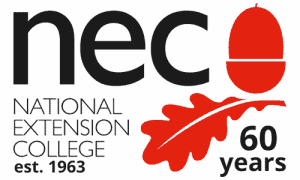Call free on: 0800 389 2839
Call free on: 0800 389 2839
Explore Our courses
Art History Creativity & Arts

Learn the ‘language of looking’ and open your mind to the architecture, painting and sculpture that surrounds us through our insightful Art History online course.
Are you keen to learn more about the history of art and the creative minds that drove change and inspired generations of future artists? This course will expand and develop your knowledge of this fascinating subject.
Art history has strong ties to other subject areas – including social history, anthropology and politics. Through studying art, you’ll gain valuable exposure to other humanity subjects, which will build your wider knowledge and inform how you view and understand the world.
By studying art history you’ll be able to identify different styles and movements, as you gain an appreciation of art in its historical context. This course will encourage you to become a more inquiring and critical thinker, and offers an enjoyable, insightful learning experience for any budding art historian!
Why study Art History?
Do you enjoy visiting museums and galleries and thinking about the objects you see? If learning about different historical works, artists, cultures through your own research inspires you, then our Art History online course is the perfect choice!
Art history has strong ties to other subject areas – including social history, anthropology and politics. Through studying art, you’ll gain valuable exposure to other humanity subjects, which will build your wider knowledge and inform how you view and understand the world.
Our Art History online course is ideal if you:
- Are a keen artist, either amateur or professional.
- Enjoy learning about artists and major art movements.
- Would like to explore how art influenced different cultures and traditions.
- Want to boost your art history knowledge to support and enhance your studies in other related humanity or art subjects.
Future opportunities
- Studying our Art Techniques course or Art GCSE or A level.
- Art history opens up a wide range of rewarding career paths in areas such as museum conservation, heritage, illustration, graphic design, fashion, architecture and media.
Course content
Module 1: Studying art history
- What is art history?
Module 2: An introduction to art history
- Discussing works of art
- Themes and topics in art
Module 3: Art in context
- Historical and cultural contexts
- How art is made and displayed
Module 4: Painting, sculpture and architecture in Italy and Flanders from c.1400 to c.1520
- Painting in Italy and Flanders from c.1400 to c.1520
- Sculpture and architecture in Italy from c.1400 to c.1520
Module 5: Painting, sculpture and architecture in Europe and the USA from c.1906 to c.1980
- Painting in Europe and the USA from c.1906 to c.1980
- Sculpture and architecture in Europe and the USA from c.1906 to c.1980
Study Art History with us and benefit from:
- Flexible learning
- Support from a personal tutor by email, phone or Skype
- Any time enrolment
- Assignments with tutor feedback
- Ongoing support from Student Support
- Forums to discuss your course with other students
learn@nec
Choose when and where you access your course, using learn@nec our 24/7 learning platform.
This easy-to-use learning platform includes interactive checkpoints, quizzes and activities to help you evaluate your progress.
Our course tutors
You’ll have access to support from a personal tutor. All NEC tutors are subject experts, with experience of supporting online learners.
Meet Jane who is just one of our first-class art tutors:
“I’ve been involved in distance education for many years, and have been a practising artist all my adult life. In my own creative practice, my main interests are in drawing, illustration, printmaking, animation and painting, and also digital art. Learning to draw is the platform for a satisfying creative adventure with art: looking intensively at the work of other artists is essential to developing your own work. My knowledge of art history means I can pinpoint examples of artists to help you develop your own practice. I have a first degree in Fine Art and English and a PGCE in Art Education.”
What you need to know
Format
- Online learning with support from a personal tutor
Entry requirements
- You will need some basic essay-writing skills
- An ability to read and write in English
Hours
- Complete at your own pace
- Approx. 80 study hours, plus time for completing assignments
Assignments
- 12 assignments
Requirements
- Gombrich, The Story of Art, 16th edition, Phaidon
- Murray, Penguin Dictionary of Art and Artists, Thames and Hudson
- Murray, The Art of the Italian Renaissance, Thames and Hudson
- Murray, The Architecture of the Italian Renaissance, Thames and Hudson
- Olson, Italian Renaissance Sculpture, Thames and Hudson
- Frampton, Modern Architecture: A Critical History, Thames and Hudson
- Lynton, The Story of Modern Art, Phaidon
- Internet access
- Computer operating system and browser to support learn@nec
What's included?
Our course fees are open and honest to help you plan for any additional costs.
Your course fee includes:
- Access to learn@nec
- Course materials to enable you to complete the course
- Support from a personal tutor for up to 12 months from your date of enrolment
- Assignment marking
- NEC’s guide to study skills: How to Succeed as an Independent Learner
- Spelling, punctuation and grammar guide
- Time planner to help you plan your study timetable
Your course fee does not cover:
- The cost of the additional textbooks
Arrange a call back with a member of our Course Advice Team
Would you like to talk to our Course Advice Team about the best route for you? Visit our Contact Us page, fill in the form and a member of the team will get back to you!
Key facts
Course Fees £399
It’s your choice: you can pay in full at the point of enrolment, or you can spread the cost over monthly instalments with our finance offer. We offer a choice of six or 12 month repayment plans, with 0% APR as standard.
To pay in instalments you will need to enrol by telephone.
Representative example:
Course fee: £399
Deposit: £39.90
Amount of credit: £359.10
Monthly payment: £29.93
Duration of agreement: 12 months
Total repayable: £399
Rate of interest: 0% (fixed)
0% APR representative.
The National Extension College (NEC) work with finance company OMNI. For more information on our relationship with OMNI and repayment plans see our Fee Information page.
learn@nec is our virtual learning environment, the gateway to your course and the NEC community. All the resources you need to study are here and you have the flexibility to access them wherever you want, whenever you want
- You will need some basic essay-writing skills
- An ability to read and write in English
As part of NEC’s mission to widen participation our team is happy to discuss payment options unavailable online. Please contact our team on 0800 389 2839 or email info@nec.ac.uk


